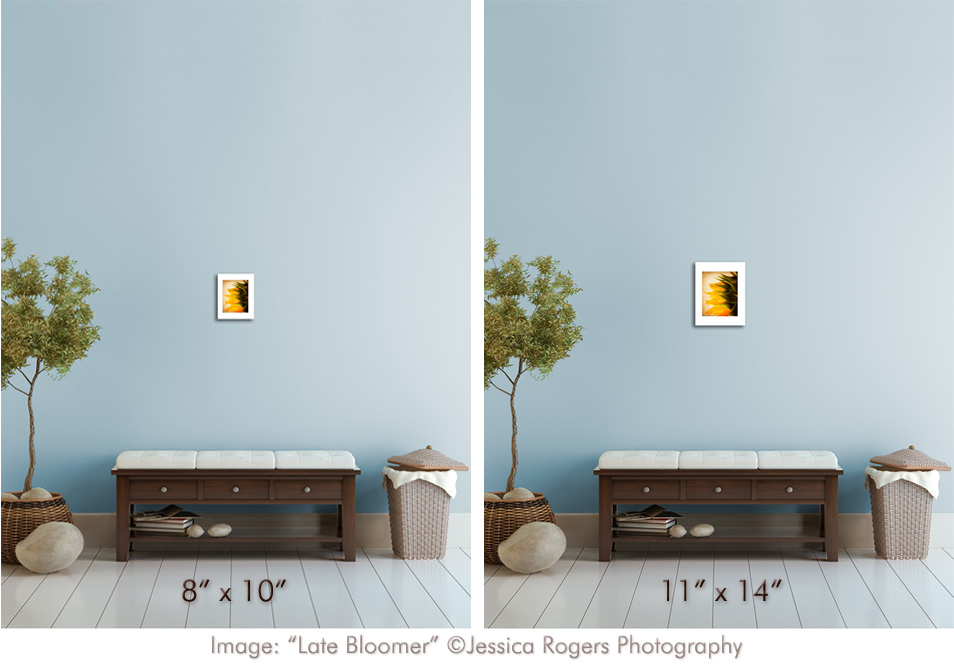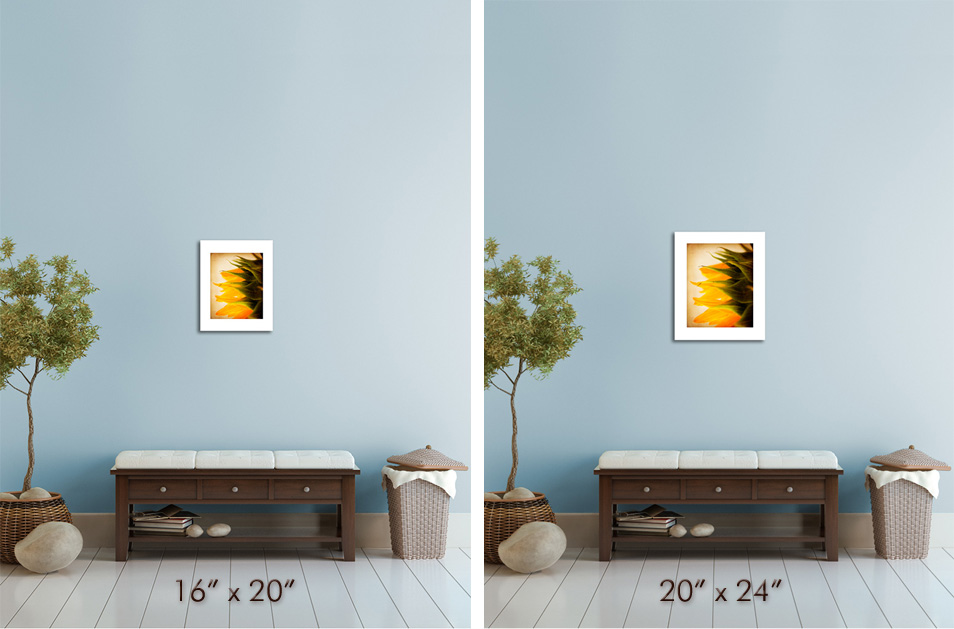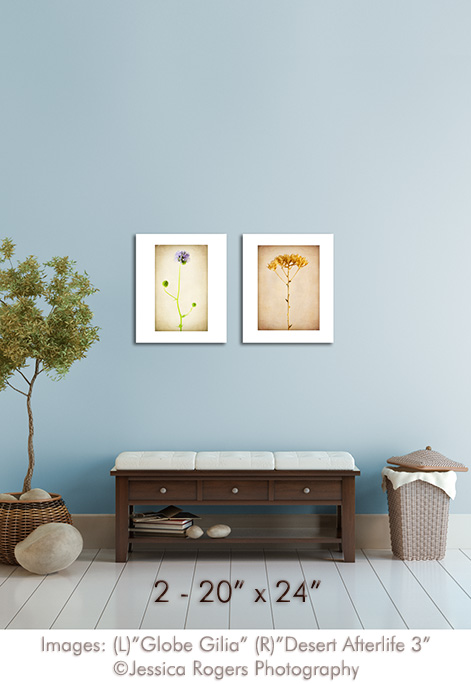…at least when it comes to filling your walls with art!
I sometimes forget that I’m probably more familiar with visualizing print sizes than most people. It make sense, considering I do all my own printing and matting, I’m regularly handling various standard print sizes. Because of this, I also am fairly good at determining what size of matted and framed piece of art will fill a wall space nicely.
But even with all that familiarity, I have still surprised myself a time or two about how a particular size looks once I get it up on the wall. And it’s times like that when I remember that most people aren’t as familiar with the basic, standard sizes of matted and framed photographs and how they might look in the space you want to put them. So I thought it might be helpful to share some of my tips on how to choose the right size piece for your wall space, ways to arrange prints, and the importance and impact matting and framing has.
First off, lets get a bit more familiar with those standard sizes. I will be focusing on the 4 standard sizes I use for my matted prints: 8″ x 10″, 11″ x 14″, 16″ x 20″, and 20″ x 24″. (Please note: the size I refer to here, as with the prints I sell, is the finished size after the print is matted, not the image inside the matting.) See how each of these sizes look (without frames) in the same space:


You can already see that the larger the single print is, the better balanced it is within it’s space. Being familiar with the various sizes may not be enough to determine what you need to fill your wall space, though. I think the single 20″ x 24″ looks the best of the four options above, but let’s say I’m in love with two prints I want to hang together. Here’s what 2 – 20″ x 24″ matted prints look like in the same space:

I think the additional print makes the space feel even more balanced and cozy. This leads to what I’ll be talking about in my next post in this series: using groups of prints to fill a space. That’s where things get really interesting! Not to worry though, my tips will hopefully help you get past the fear of hanging art so you can begin to have fun with it and actually enjoy your new piece of art in its intended space.
Check out Part 2: Fill ‘Er Up!
The images used for the examples above are ©Jessica Rogers Photography and can all be found in my online shop in all four standard sizes.

Agreed, Jessica, small framed art can get lost, as your example photos demonstrate. In my opinion, photos also need generous mats to avoid looking crowded within a frame. Small art really needs generous mats, I think. As for fitting in to a room, big is usually better — but in your experience is there a minimum resolution needed for a 20×24″ (image size) print to not lose its crispness?
Stephen, thank you for sharing your thoughts. Matting can be a very personal preference area. My preference is to have a comfortable buffer of matting between the photo and frame. What is a comfortable size for me will be different for someone else. I have occasionally made custom pieces with extra matting, and it can look very nice. It tends to fit in well where a more minimalist feel is desired. As for printing resolution sizes, I will refer you to your local trusted pro lab, but generally you’ll want about 300 dpi for files you want to print.
Thank you, Jessica. While I have your attention, may I ask an admittedly too-vague question about printing digital photographs? What in your view is the best way (or best pro lab for that matter) to produce archival digital photographs? What would a museum want?
I do all my own printing and matting, so I do not have a pro lab I would recommend. I always look for high quality, archival (archival being the key word, and should be a word found in the product description) supplies for my photo paper and mat board. As for what a museum would want, my advice would be to ask that particular gallery or museum directly.